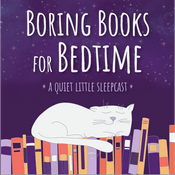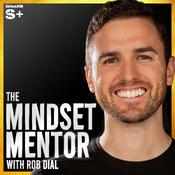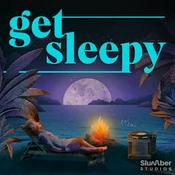113 episódios

JVS CIT Editorials and Abstracts - Dec 2025
01/1/2026 | 21min
In this episode, we spotlight editorials and abstracts from the Journal of Vascular Surgery Cases, Innovations, and Techniques (JVS-CIT). Editorials and Abstracts are read by Authors as well as members of the SVS Social Media Ambassadors.You can Guests: Grant Lewin, MD, PGY4 SLU Postoperative changes of wrist-brachial index following arteriovenous fistula implantation correlate with steal syndrome, a prospective study Early and late outcomes of patient-specific endografts with retrograde outer branches for complex aortic aneurysms involving cranially oriented target vessels Early reintervention for hemostasis following open abdominal aortic aneurysm repair using Ifabond surgical glue Laser fenestration and shape memory polymer embolization of type II endoleaks Thoracic aortic injury as a complication of spinal surgery: A new case and systematic review (1991-2024) Benefit of virtual reality during visceral artery aneurysms open and endovascular surgery planning Bioengineered human blood vessels to treat hospital-acquired vascular complications Hosts: John Culhane (@JohnCulhaneMD) Follow us @audiblebleeding, @JVS-CIT Learn more about us at https://www.audiblebleeding.com/about-1/ and provide us with your feedback with our listener survey. *Gore is a financial sponsor of this podcast, which has been independently developed by the presenters and does not constitute medical advice from Gore. Always consult the Instructions for Use (IFU) prior to using any medical device.

JVS Author Spotlight - Newton and Goodney
30/11/2025 | 22min
Audible Bleeding editor Wen (@WenKawaji) is joined by 5th-year general surgery resident Sasank Kalipatnapu (@ksasank) from UMass Chan Medical School, and JVS editor Dr. Duncan (@ADuncanVasc) to discuss some of our favorite articles in the JVS family of journals. This episode hosts Dr. Newton and Dr. Goodney, the authors of the following paper. Articles: Association between imaging surveillance compliance and long term outcomes after endovascular abdominal aortic aneurysm repair at Veterans Affairs Hospitals Show Guests Dr. Goodney- section Chief of vascular surgery at Dartmouth Hitchcock Medical Center as well as associate Professor at Dartmouth. Chair of the research advisory committee within the SVS quality improvement program. Dr. Newton- General Surgery resident at Dartmouth Health in New Hampshire. Follow us @audiblebleeding Learn more about us at https://www.audiblebleeding.com/about-1/ and provide us with your feedback with our listener survey.

Inside VSORT - Building the Next Generation of Vascular Surgery Researchers
24/11/2025 | 33min
Jacob Soucy (@JacobWSoucy) hosts an inside look at one of the most active and collaborative vascular surgery research teams in the country, the Vascular Surgery Outcomes Research Team (VSORT) at Penn State College of Medicine. VSORT is a dynamic academic group that brings together vascular surgery attendings, residents, postdoctoral fellows, and medical students to conduct impactful outcomes-based research. Meeting every Friday at 4 PM, the team has produced dozens of peer-reviewed manuscripts, podium presentations, and national collaborations, embodying the power of mentorship and structure in academic medicine. In this episode, Jacob speaks with two of the key figures behind VSORT's success, Dr. Faisal Aziz and Dr. Ahsan Zil-E-Ali, to discuss how the program was founded, how it operates, and what other institutions can learn from its model. Show Guests Dr. Faisal Aziz (@FA_VascularMD) is the Chief of Vascular Surgery and Program Director of the Integrated Vascular Surgery Residency at Penn State Milton S. Hershey Medical Center, where he also serves as the Gilbert and Elsie Sealfon Endowed Professor of Surgery. A nationally recognized leader in vascular surgery, Dr. Aziz has authored more than 150 peer-reviewed publications and holds multiple national leadership roles. His work focuses on advancing surgical education, outcomes research, and mentorship within academic vascular surgery. Dr. Ahsan Zil-E-Ali (@ahsanzileali) is a Postdoctoral Research Fellow at Penn State Milton S. Hershey Medical Center and a driving force behind VSORT's research productivity. A graduate of the University of Health Sciences in Lahore, Punjab, he has co-authored nearly 100 peer-reviewed publications and plays a central role in coordinating VSORT's data infrastructure, mentorship framework, and project pipeline. His passion for research efficiency and education continues to inspire medical students and trainees across the institution. Resources and Social Media Twitter: @VsortVasc, @PennStVascular Instagram: @vsortvasc, @pennstatevascular Special thanks to Dr. Faisal Aziz and Dr. Ahsan Zil-E-Ali for sharing their time and insight, and to the entire VSORT team for their ongoing contributions to vascular surgery research and mentorship. Follow us @audiblebleeding for updates on upcoming episodes and new research features. Learn more about us at audiblebleeding.com/about-1 and share your feedback through our listener survey. *Gore is a financial sponsor of this podcast, which has been independently developed by the presenters and does not constitute medical advice from Gore. Always consult the Instructions for Use (IFU) prior to using any medical device.

JVS Author Spotlight - Cifuentes, DeMartino, Clark & Massie
18/11/2025 | 51min
Audible Bleeding Editor and vascular surgery fellow Richa Kalsi (@KalsiMD) is joined by 4th year general surgery resident Joe El Badaoui (@JosephBadaouiMD), JVS editor Dr. Audra Duncan (@ADuncanVasc), and JVS-VS editor Dr. John Curci (@CurciAAA) to discuss two great articles in the JVS family of journals. The first article discusses an extensive experience using cryopreserved arterial allografts for vascular reconstruction after major oncologic surgery. The second article sheds light on nanoplastics in atherosclerotic plaques. This episode hosts Dr. Sebastian Cifuentes, Dr. Randall DeMartino (@randydemartino), Dr. Pierce Massie, and Dr. Ross Clark, the first and senior authors of these two papers. Articles: Part 1:Ten-year experience using cryopreserved arterial allografts for vascular reconstruction during major oncologic surgery (Drs. Cifuentes & DeMartino) Part 2: Micro- and nanoplastics are elevated in femoral atherosclerotic plaques compared with undiseased arteries (Drs. Clark & Massie) Show Guests Dr. Sebastian Cifuentes is a first year integrated vascular surgery resident at University of Michigan in Ann Arbor, MI Dr. Randall DeMartino is a Professor of Surgery and the chair of the Division of Vascular and Endovascular Surgery at the Mayo Clinic in Rochester, MN Dr. Pierce Massie is a general surgery resident in his research time at the University of New Mexico School of Medicine in Albuquerque, NM Dr. Ross Clark is an Assistant Professor of Vascular Surgery and Assistant Professor of Cell Biology and Physiology at the University of New Mexico School of Medicine in Albuquerque, NM Follow us @audiblebleeding Learn more about us at https://www.audiblebleeding.com/about-1/ and provide us with your feedback with our listener survey.

JVS Author Spotlight - Darling, Banks, and Beck
05/10/2025 | 39min
Audible Bleeding editor Wen (@WenKawaji) is joined by 4th year medical student Nishi (@Nishi_Vootukuru), JVS editor Dr. Duncan (@ADuncanVasc), JVS-CIT associate editor Dr. Jimenez to discuss some of our favorite articles in the JVS family of journals. This episode hosts Dr. Darling, Dr. Banks and Dr. Beck. Articles: Outcomes following drug-coated balloons and drug-eluting stents in patients with peripheral arterial disease Fiber Optic RealShape (FORS) and three-dimensional overlay technology in preemptive segmental artery embolization to reduce the risk of spinal cord ischemia prior to fenestrated endovascular aortic aneurysm Show Guests Dr. Jeremy Darling- integrated vascular surgery resident at BIDMC Dr. Charles Banks - integrated vascular surgery resident at UAB Dr. Adam Beck- Director of the division of vascular surgery and endovascular therapy, professor of surgery, director of quality and associate chief medical quality officer at the University of Alabama. Follow us @audiblebleeding Learn more about us at https://www.audiblebleeding.com/about-1/ and provide us with your feedback with our listener survey.
Mais podcasts de Saúde e fitness
Podcasts em tendência em Saúde e fitness
Sobre Audible Bleeding
Ouve Audible Bleeding, On Purpose with Jay Shetty e muitos outros podcasts de todo o mundo com a aplicação radio.pt

Obtenha a aplicação gratuita radio.pt
- Guardar rádios e podcasts favoritos
- Transmissão via Wi-Fi ou Bluetooth
- Carplay & Android Audo compatìvel
- E ainda mais funções
Obtenha a aplicação gratuita radio.pt
- Guardar rádios e podcasts favoritos
- Transmissão via Wi-Fi ou Bluetooth
- Carplay & Android Audo compatìvel
- E ainda mais funções


Audible Bleeding
descarregue a aplicação,
ouça.






































